This week we looked at finding and building more Opportunity Cards based on our research. We conducted a (mini) forecasting exercise by looking at CSIRO Future’s Australia 2030 report that laid out future scenarios of Australia and predicting what water problems may arise (or persist) based on them. We also conducted our first primary research activity, which was a documentary screening of A Plastic Ocean and Q&A session with Dr. Jennifer Lavers of Plastics Oceans Australasia.
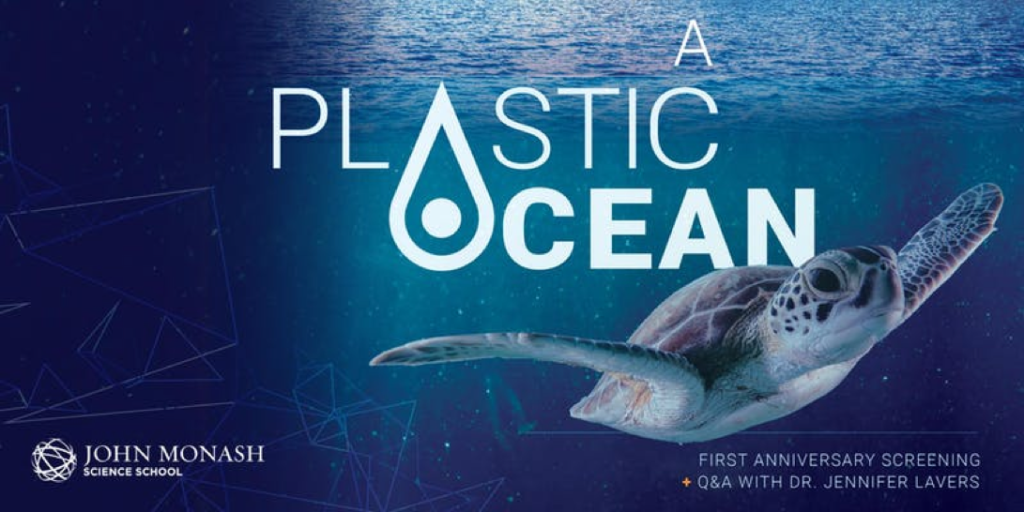
Event poster for the screening of A Plastic Ocean and Q&A session
The four scenarios set out by CSIRO are in turns inspiring and also frightening! Water plays a huge role in all of them, be it for trade and shipping, energy generation, agriculture, or just to cater to increased consumption. In the most dystopian scenario, extreme weather and conflicts over resources (including water) factor prominently.
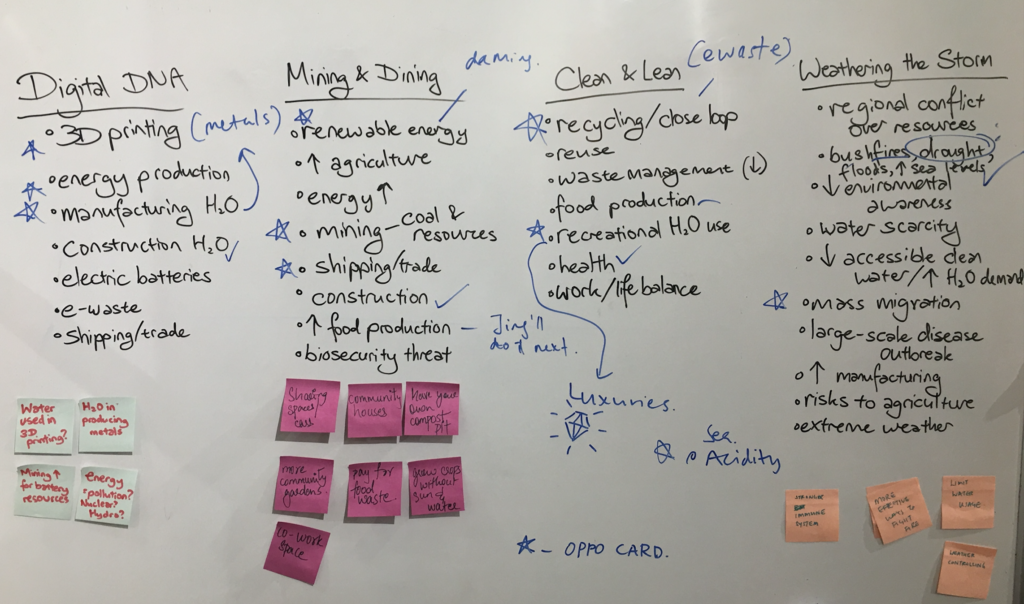
The four scenarios include Digital DNA, a tech-driven utopia; Mining and Dining, a resource-heavy scenario; Clean and Lean, where the world becomes more eco-conscious and sustainable; and Weathering the Storm, a climate extreme, resource-strained dystopia
From a Netflix series Explained, we watched the episode ‘The World’s Water Crisis’ which highlighted that only 1% of Earth’s water is freshwater and of that 1%, approximately ⅓ is surface water which we can easily access. We live in a very limited supply! The same episode talked about the hidden water footprints of everyday products – a cup of coffee = 130L, a cotton shirt = 2,500L, 1kg of meat = 15,000L
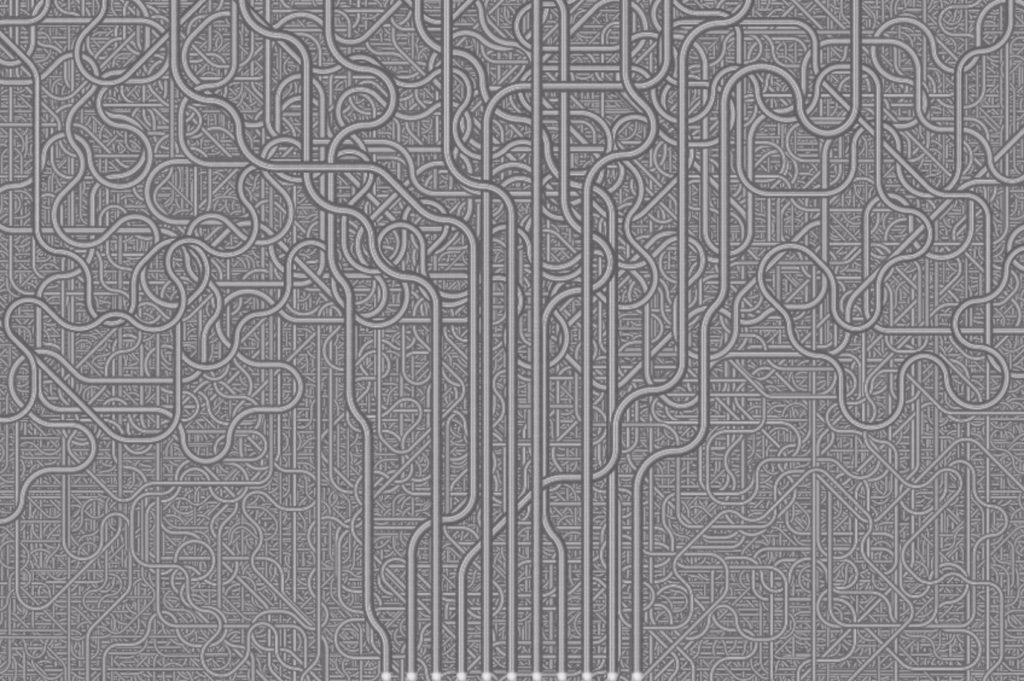
A Chris Jordan artwork, ‘Plastic Cups, 2008’ that represents 1 million plastic cups used on airline flights in the US every 6 hours
8 million tonnes of plastic is dumped into the ocean every year of which 80% sinks to the bottom of the sea. In a study conducted in different global locations, 25% of fish and all mussels sampled had anthropogenic content.
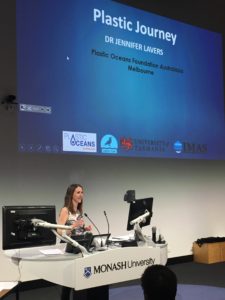
Dr. Jennifer Lavers sharing her experience of monitoring plastic pollution. In just one seabird she examined, she found 276 pieces of plastic – making up 15% of the bird’s weight.
“Water isn’t like petroleum, or any other commodity on Earth for that matter because without water we die. In 2010 the UN recognized access to water and sanitation as a human right, and that’s the challenge of our water crisis. How are you supposed to value and invaluable resource while ensuring everybody has it?”
“There is no away. The ocean is everyone’s backyard.” (About throwing plastics away)
NEXT
- We will keep making as many Opportunity Cards as we can and adding detail to the ones we already have (topics to work on include water used in recycling, mining, construction, recreation, energy generation, and shipping)
- Arranging some interviews for topics we want to learn more about – gotten contact from Plastic Oceans NGO and have identified some Swinburne knowledge experts
- Getting excited to learn about CERN tech and meet our buddies over at Mannheim soon!

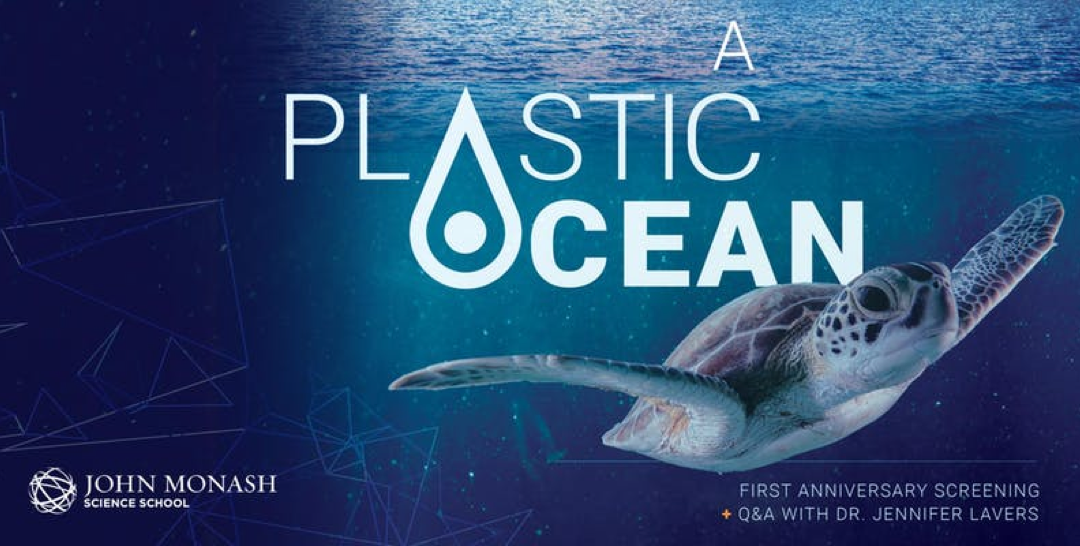
Hi Team Spring
We loved the documentary you described in your post. We watched it and gained a lot of insights from it. Keep up the good work!